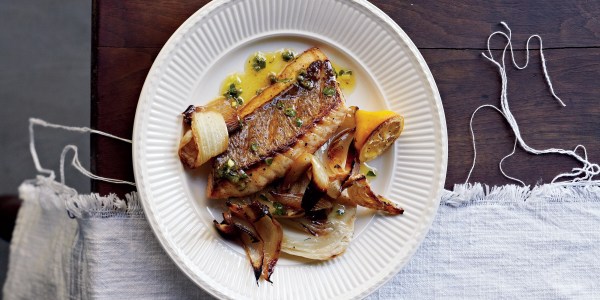How to Make a Pan Non Stick Again
There's one surefire way to diner-perfect over-easy eggs or restaurant-quality crispy skin salmon fillets, and that's relying on the slick surface of a nonstick pan. Gone are the days when Teflon (the brand name for a certain type of coating) was the only option and now you'll find a wide variety of nonstick pans in a range of prices. But no matter which type of nonstick pan you choose, you'll want to steer clear of these seven common mistakes that can ruin your pan.
1. Using cooking spray
Stop where you are and put down that nonstick cooking spray! While you may be using a spray like Pam instead of oil or butter to reduce calories in a dish, it's actually not compatible with nonstick cookware. Using the spray time after time will result in a build-up that is almost impossible to remove. For the sake of the pan, use a minimal amount of oil, such as canola, olive, vegetable or corn oil, as well as butter. If you are trying to cut calories, invest in an oil mister, which allows you to coat a pan with a small amount of oil. However, timing is key when adding the fat, which brings us to the next point…
2. Adding the fat at the wrong time
With most cookware, the general rule of thumb is to warm the pan on the stovetop first, then add the oil or butter, followed by whatever you're cooking. However, this goes out the window with nonstick cookware: The fat should go into the cold pan before heating. There are two reasons for this — the oil enhances the nonstick effects of the cookware when added before the food can soak up the oil and, more importantly, some nonstick pans can emit potentially unhealthy fumes when heated without a lubricant.

Quentin Bacon
3. Using the wrong cooking utensils
To prevent scratching and scraping on the nonstick surface, stick to the best utensils for the pans: wooden spoons and heatproof silicone spoons and spatulas. Nothing that's metal (tongs, silverware, etc.) should ever touch the pan's interior.
4. Using high heat
When cooking on the stovetop, keep the heat at medium or lower to protect the pan's nonstick surface. To avoid warping and safety concerns, check your owner's manual before putting nonstick pans into the oven to see the maximum temperature advised (or if the pan should go in the oven at all). If you're not sure, err on the side of caution and avoid putting nonstick pans in the oven altogether. Instead reach for oven-safe stainless steel pans, cast iron pans, or Dutch ovens for recipes that start on the stovetop and finish in the oven, such as browning a pork tenderloin before popping into the oven to roast.
5. Washing improperly
For cleaning, stick to sponges (soft-side only), soft brushes and microfiber towels with dish soap. Do not use abrasive cleaners such as scouring pads and steel wool. While some companies say their nonstick pans are dishwasher-safe, it's better to wash the pans by hand to protect the surface. Check your manual to see if your nonstick cookware has specific washing instructions — for example All-Clad recommends cleaning with a combination of baking soda and water to scrub away any residue build-up.
6. Using for storage
When finished cooking, transfer leftovers into containers designed to go in the refrigerator. Storing the food in the pan is just one more thing that can cause additional wear and tear on the nonstick finish. On a similar note, don't soak the pan in water overnight. It's better to just wash the pan before heading off to bed.
7. Not replacing soon enough
At the first sign of peeling or wear of the nonstick surface or when food begins to stick to it like never before, it's time to swap it out for a new pan. Good Housekeeping consulted the New York State Department of Health, which noted that the pans are more likely to release toxins when they are used while the nonstick surface is chipped or flaked. To stay safe, it is recommended to toss the pan every couple years before this becomes an issue.
Related:

How to Make a Pan Non Stick Again
Source: https://www.today.com/food/7-ways-you-are-ruining-nonstick-pans-how-save-them-t104329